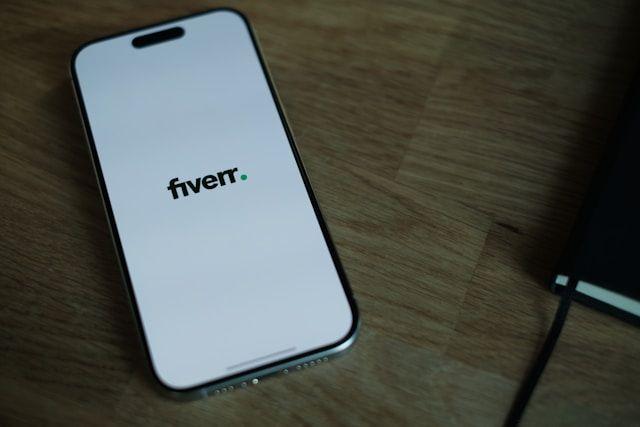For years, agencies were the go-to when businesses required B2B services, especially for marketing or technical needs. However, in recent times, there has been a shift from agencies to creator teams.
The US alone experienced a
34% increase in the number of independent workers from 2020 to 2021. But that’s not all; digital companies
recorded a jump from less than 30 companies using freelance workers in 2014 to more than 100 in recent years. The trend is similar on a
global scale.
From these statistics, it is clear that not only are businesses shifting to gig work, but more brands are looking for an alternative to marketing agencies and turning to fractional creator teams. Brands are now leveraging creator-led marketing to transform their campaigns without the cost and bureaucracy of traditional agencies.
But why exactly are brands leaving agencies? And what does it mean for the future of marketing teams? Let’s take a deeper look.
Why Brands Are Leaving Agencies
Naturally, businesses do not embrace any strategy that doesn’t positively improve their bottom line. Therefore, we can deduce that if there is a shift from agencies to fractional creator teams, there must be good reason.
Below are five explanations why brands prefer freelancers over agencies:
High Costs
Agencies aren’t cheap because, to be fair, they also exist as a business and have to factor that into their fee. Brands have to shell out a lot on retainers, overhead, and account management fees. Sometimes, a huge chunk of the charge does not go towards things that directly impact performance.
However, freelance marketing teams help businesses cut unnecessary costs and invest more in the actual marketing of their brand. They don’t have to fork out hefty retainer and management fees but get to work with experts who understand their target audience and will deliver results. Given these benefits, it's no surprise that brands are quickly catching on.
Lack of Agility
The
world moves fast, and so does marketing. For instance, a new trend that may impact your business can go viral in minutes. Algorithms can shift overnight, and consumer preferences are constantly evolving. These changes require marketers to move fast.
Unfortunately, traditional agencies often lack the agility to move quickly because they are afflicted by their rigid approval processes. By the time a campaign is allowed to go live, the moment to implement a new viral trend or change may have already passed.
Brands don’t have that problem with fractional marketing teams as they are usually built for speed. Freelance teams are often more flexible and can accommodate change as it comes because they don’t require bureaucratic processes.
One-Size-Fits-All Approach
The lack of flexibility that is common with most agencies is not limited to their process but their marketing approach as well. They may recycle strategies that have worked for them before.
Although there is an argument for not fixing what’s broken, it also means their clients can sometimes receive generic campaigns when uniqueness is required to gain a competitive edge in the market.
Today’s consumers crave real, relatable content, and fractional creator teams deliver exactly that. These teams usually consist of specialised experts from around the globe, which results in fresher and out-of-the-box approaches. With them, brands enjoy tailored and original content that resonates with their target audience.
High Turnover and Junior Talent
The people pitching the work at an agency aren’t always the ones working on your account; some agencies rely on junior talent to execute the campaigns. This can lead to inconsistency and a shallow understanding of the brand’s goals because the junior talent may not even have attended the pitching meeting.
Fractional marketing teams solve this problem by allowing brands to work directly with the content creators delivering the work. Plus, they get a dedicated team that truly understands their vision and goals with their projects.
How to Transition from an Agency to a Fractional Marketing Team
The agency vs. fractional marketing team debate is heating up — and for good reason.More brands are
shifting from traditional agenciesto fractional teams in search of flexibility, cost efficiency, and direct access to top-tier marketing talent. But making the switch can be daunting without a clear roadmap.Whether you’re trying to cut costs, increase agility, or gain more control over your marketing, this guide will walk you through how to hire and manage a fractional marketing team — seamlessly and strategically.
Step 1: Define Your Marketing Needs and Goals
Before you start scouting for a fractional team, define your goals and pain points. This clarity ensures your new team can deliver results fast, without back-and-forth miscommunication.Ask yourself:1. What problem am I trying to solve?Are you struggling to attract customers, convert leads, or build brand awareness? Defining the exact challenge helps you find specialists with the right expertise.2. What type of content do I need?Do you need social media content, blog articles, video campaigns, or paid ad creatives? While your fractional team can advise, having a general idea based on your market research helps them move faster.3. How often will I need content?Determine your ideal publishing frequency and set a content budget. Even a rough framework gives your team a sense of scale and pacing.4. What’s my brand identity? Your fractional team should reflect your voice, tone, and values. For instance, if sustainability is central to your brand, that should shape your messaging and creative direction.5. What’s my budget?Get quotes from several fractional teams and compare scope, quality, and cost. Establishing your price range early prevents surprises later.
Step 2: Find the Right Fractional Team
Once your goals are clear, it’s time to source the right talent mix. There are several ways to find skilled fractional creators and strategists.Freelance and Creator PlatformsPlatforms like Upwork and Fiverr are good starting points, but for a more integrated experience, consider Amaka Fractional Teams — where you can access vetted specialists under one cohesive system.Social Media Platformslike LinkedIn, Instagram, and X (formerly Twitter) are goldmines for discovering niche marketing talent. Search relevant hashtags or browse portfolios directly.Networking and Referrals Referralsoften yield the best results. Tap into your professional network, marketing groups, or Slack communities to find trusted teams with proven track records.When evaluating candidates, don’t just review portfolios — have a quick virtual meeting to assess chemistry, communication style, and alignment with your brand’s personality.
Step 3: Set Clear Expectations Early
Miscommunication kills momentum. From day one, set clear expectations around:
Content formats and brand style
Deadlines and revision cycles
Payment terms and cadence
Key performance indicators (KPIs)
Clarity upfront eliminates confusion and keeps everyone accountable.
Step 4: Always Have a Contract
Even when working with freelancers or small teams, a written contract is non-negotiable. It protects both parties, defines deliverables, payment terms, and IP ownership, and reduces potential conflicts.Platforms like Amaka simplify this by allowing you to create contracts, hire, and pay content creators in one place — no admin chaos.
Step 5: Use Tools That Enable Seamless Collaboration
Fractional teams often juggle multiple clients, so workflow tools are essential.Use:
Asana or ClickUp for project management
Slack or Microsoft Teams for communication
Google Drive or Dropbox for file sharing
A centralized system ensures alignment and minimizes missed deadlines or lost assets.
Step 6: Pay Fairly — and On Time
Fractional teams may be cost-effective, but that doesn’t mean cheap. If you want to attract and retain high-quality marketers, pay them fairly and consistently. Top talent won’t stick around if they’re underpaid or waiting weeks for invoices to clear.
Step 7: Give Constructive Feedback
Feedback drives improvement — but delivery matters. Avoid vague criticism like “this doesn’t work.” Instead, provide specific, actionable feedback that clarifies what to adjust and why.Treat your fractional team as collaborators, not contractors. Respect and clarity build long-term loyalty and better results.
Step 8: Track Results and Optimize
Finally, measure what matters. Review KPIs regularly — engagement, conversion rates, traffic growth, etc. — and adjust strategy as needed.A good fractional team will proactively review performance with you and suggest optimizations to keep results trending upward.
The Future Belongs to Fractional Teams
The marketing landscape is changing fast. Traditional agency retainers are giving way to more agile, results-driven partnerships — and fractional marketing teams are leading that charge.For brands, the benefits are undeniable: on-demand expertise, faster turnaround, reduced overhead, and teams that integrate seamlessly with internal operations. But success depends on alignment — not just in skills, but in strategy, communication, and shared goals.By defining your needs, setting clear expectations, and fostering collaboration, you can transform your marketing function into a fractional powerhouse — one that adapts, scales, and performs with the speed today’s market demands.In short: fractional is the future of marketing — and the brands that embrace it early will gain a clear competitive edge.









